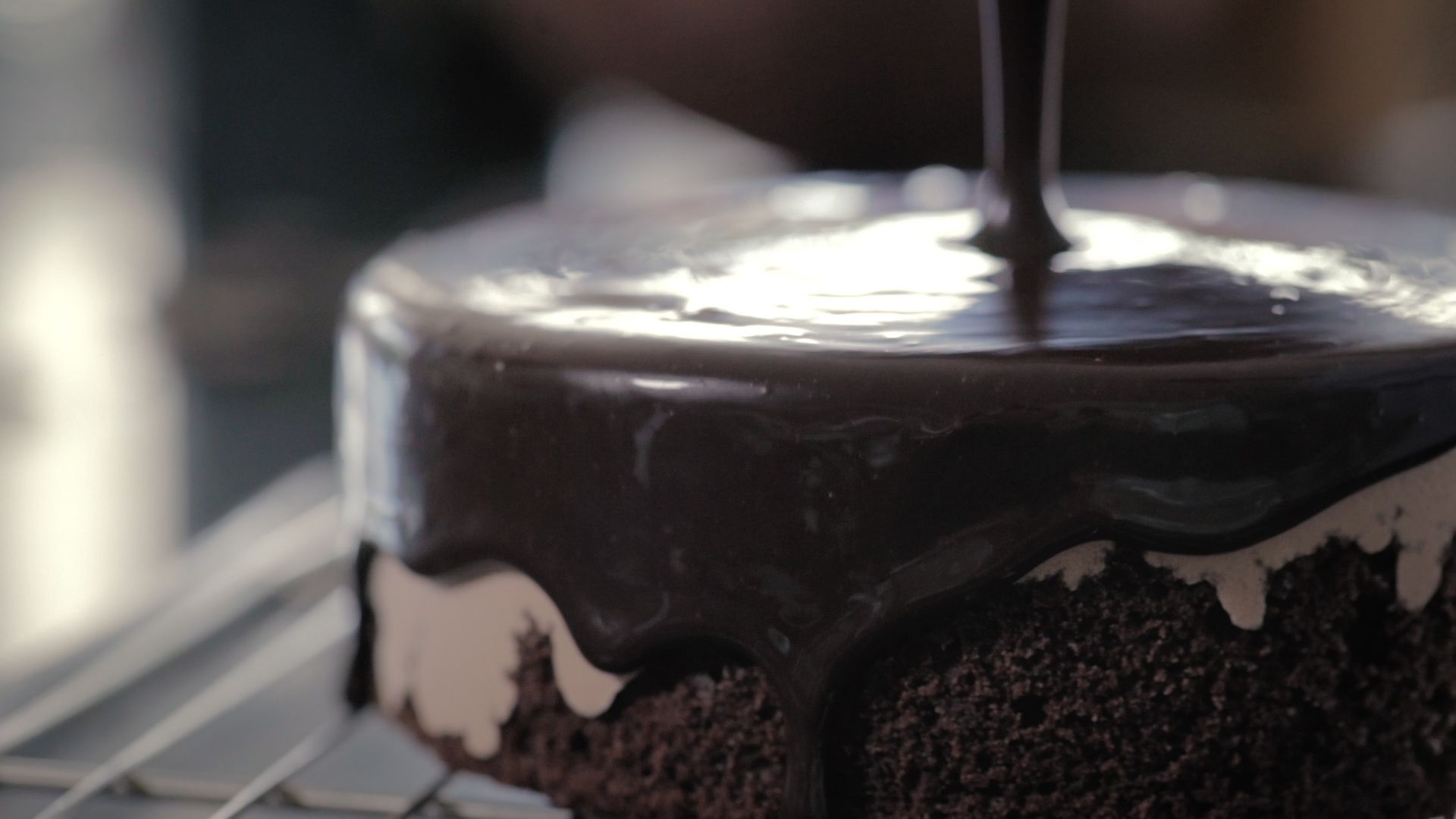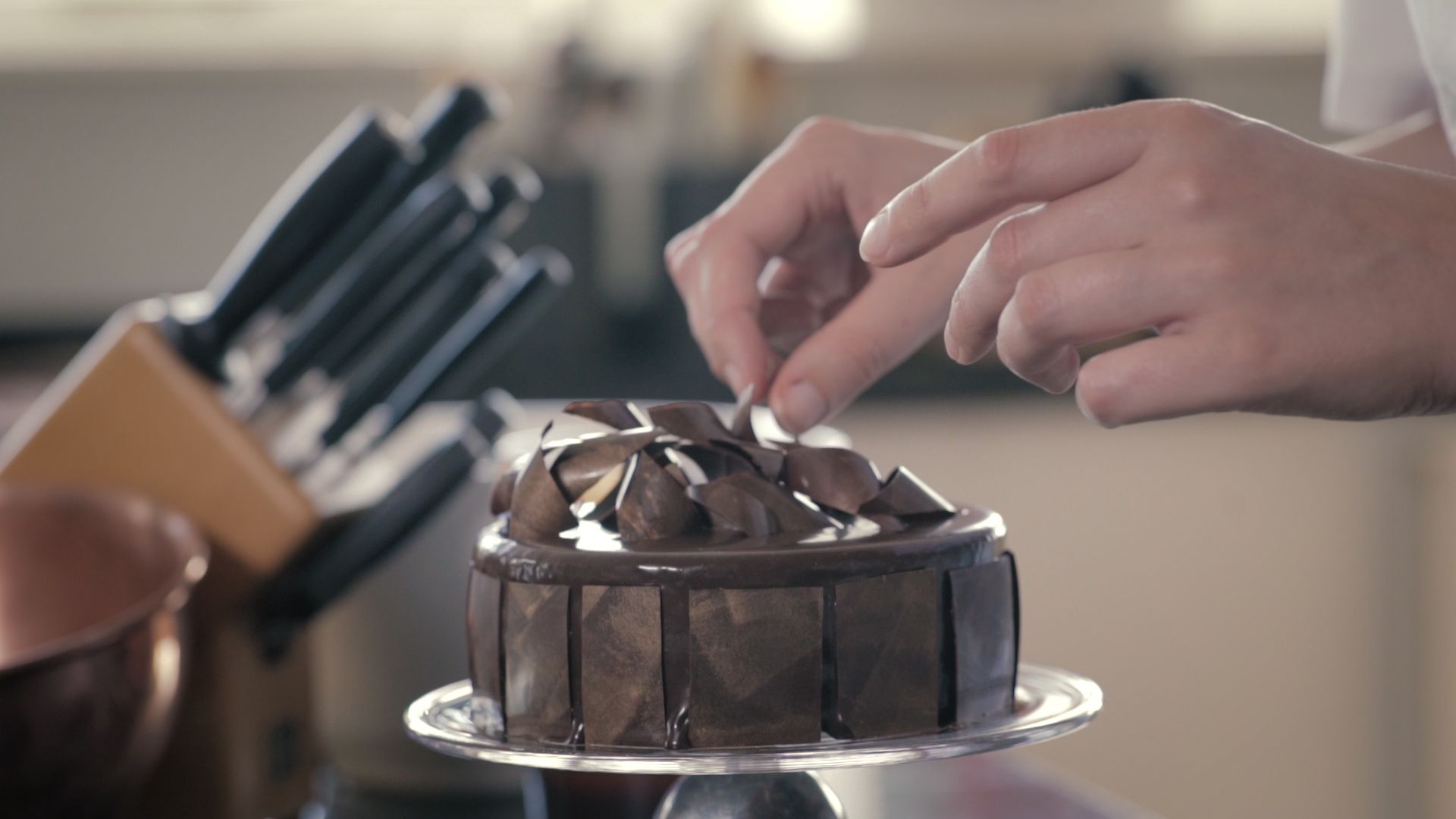
Its now Great British Bake Off Season here in the UK, and in honor of that each week Betty's will be sharing a delicious recipe, plus a video and their baking tips to go with each recipe. The kind of thing you won't find in any cookery book! Here is week Nine of their delicious hints and tips and recipe.
SACHER TORTE, the Betty's Way Part Two
SPECIAL EQUIPMENT
1 X 15 cm deep baking ringINGREDIENTS
For the chocolate glacage (Mirror glaze):50g caster sugar (1/4 cup fine sugar)
100g liquid glucose (1/4 cup)
50ml water (scant 1/4 cup)
220g dark chocolate (8 ounces)
100g butter, chilled and diced (7 TBS)
for the Torte:
50g apricot jam (1/4 cup)
METHOD
In a heavy based pan, bring the caster sugar, liquid glucose and water to the boil until all the ingredients have dissolved into a syrup.Take off the heat, add the chocolate and the butter to the syrup and stir until completely dissolved to achieve a glossy finish.
Assemble the torte by slicing the sponge in half horizontally. Tyrn upside down so the flat base becomes of the top of your torte.
Spread all the apricot jam over the middle of sponge, then add 2 to 3 TBS of the chocolate glacage before sandwiching together.
Place in th baking ring.
Now to press it down. Cover the torte with a sheet of baking parchment and place a large pan on top of it. Place some tin cans inside the pan for extra weight.
Place in the refrigerator, wighted down, for 2 hours, or ideally overnight.
To fnish the torte gently reheat the remaining glacage over a low heat until it's fluid, but not too runny.
Remove the pressed torte from the baking ring.
Place the rote on a cooling wire with a sheet of paper beneath the wire.
Pour the glacage over the torte, allowing it to flood naturally over the top and sides. Leave to partially set for 15 minutes.
Use the excess chocolate glacage from beneath the cooling wire to fill a piping bag, then pipe the word Sacher onto the top of the torte. Leave to set.

NOTES IN THE MARGINS
Tempering Dark ChocolateCHOCOLATE'S IN CHARGE
Make sure you're feeling happy and relaxed - it's a delicate task which can be affected by a bad mood! As we like to say, "Chocolate's in charge".Switch off your phoe and prepare your working area fully. You won't have time to move things around or respond to calls.
Be aware that the weather can afect your chocolate work. It's very sensitive to temperature.
IT HAS A MEMORY
Chocolate has a memory - it will take on the qualities of the surface it touches. A shiny surface makes a shiny chocolate, so use a glass bowl to warm the chocolate.Glass it good for another eason: cereamic and metal are better conductors of heat and can over-heat the chocolate.
If using a bar, break the chocolate ino similar sized pieces so they melt easily.
Use more chocolate than you need. The larger volume means it changes temperature more slowly, giving you more time to work with it at specific heats.
NEARLY THERE IS THERE ENOUGH
Create a bain marie with a couple of centimetres of water simmering in a pan under the glass bowl. Don't let the water touch the bottom of the bowl.Work the chocolate with the back of a wooden spoon against the bowl.
Keep checking the temperature, but make sure your thermometer doesn't touch the surface of the bowl itself, or the temperature measurement may be wrong. Keep it moving around the chocolate, as some spots can be hotter than others.
Heat to 45-48*C, but remember - nearly there is there enough. Take it off at around 39-40*C as the temperature will continue to rise. If it does need a little more heat, use the bain marie in ten second bursts to stay in control.
WORK IT
Now bring it down to a tempered temperature of 25-27*C.Work the chocolate by movvin it around on a flat surface, gradually taking the temperature down. A marble or granite surface is best. Plastic or wood can dull the chocolate, so avoid that if possible.
When the chocolaate reaches 25-27*C, scoop it back into the bowl, place back over the bain marie and take it back up to 29-31*C. It's now ready to use.
Come back next week for the final part of our recipe for Sachertorte and to find out how to use your tempered chocolate to create stylish decorations. For more Betty's Baking Secrets visit www.bettys.co.uk/baking-secrets

Post a Comment
Thanks for stopping by. I love to hear from you so do not be shy!
BEFORE LEAVING A COMMENT OR RATING, ASK YOURSELF:
Did you make the recipe as directed? Recipe results are not guaranteed when changes have been made.
Is this comment helpful to other readers? Rude or hateful comments will not be approved. Remember that this website is run by a real person.
Are you here to complain about ads? Please keep in mind that I develop these recipes and provide them to you for free. Advertising helps to defray my cost of doing so, and allows me to continue to post regular fresh content.
Thanks so much for your understanding! I appreciate you!